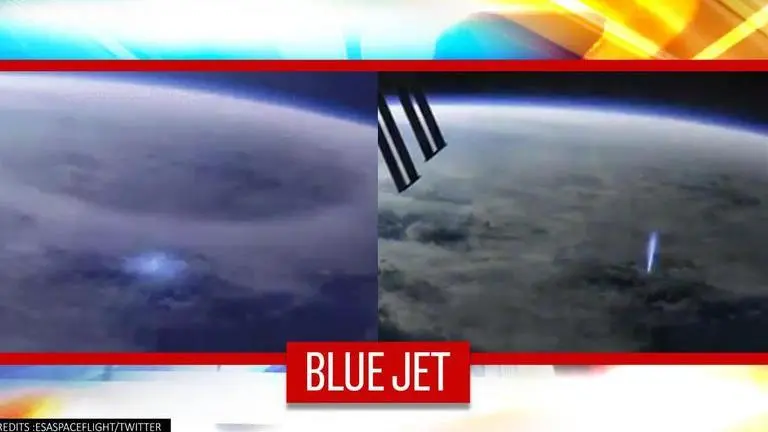Updated 24 January 2021 at 17:59 IST
'Blue jet' lightning spotted by astronauts aboard International Space Station
In another spectacular show, astronauts aboard the International Space Station (ISS) recently spotted a blue jet. Their sightings were published in Nature.
- Science News
- 2 min read

In another spectacular show, astronauts aboard the International Space Station (ISS) recently spotted a blue jet. Describing their sightings in the journal Nature, they said that it was captured by their instruments on February 26, 2019. Blue jet lighting, also known as Upper Atmospheric lighting, is a bolt of lightning that shoots upwards from thunderstorms.
The phenomenon was spotted on by the European Atmosphere Space Interactions Monitors near island of Naru on the Pacific Ocean. The scientists report that they saw five intense flashes of blue light, each lasting about 10 to 20 milliseconds. The blue jet then fanned out from the cloud in a narrow cone shape that stretched into the stratosphere, the atmospheric layer that extends from about 6 to 31 miles (10 to 50 kilometres) above the Earth's surface, as described by livescience.com.
'elves spotted'
In addition to the blue jets, researchers also saw another phenomenon that occurs in the upper atmosphere. Known as “elves”, the phenomenon stands for Emissions of Light and Very Low-Frequency Perturbations due to Electromagnetic Pulse Sources. An animated artist’s visualization of the phenomenon has now been released by the European Space Agency (ESA). Watch it here:
.@nature cover features findings by @ASIM_Payload, a first for an @esa International @Space_Station experiment! The paper describes a sighting of five intense blue flashes in a cloud top, one generating a ‘blue jet’ into the stratosphere https://t.co/1xER8rdehm pic.twitter.com/XjqRt5VGqO
— Human Spaceflight (@esaspaceflight) January 20, 2021
Advertisement
In another news about ESA, a UK designed spacecraft made its first flyby of Venus as it heads for the Sun in a mission to decode the mysteries of the neighbouring planet. The spacecraft is expected to incline in a tilt under the influence of the Sun’s gravitational force as it will face Venus to make observations that will help scientists learn more about the planet. The Solar Orbiter’s perihelion to the Sun occurred on December 27, at about 12:39 UTC (13:39 CET) amid the holiday season, according to ESA. The spacecraft will fly some 7,500 km from the Venus cloud tops.
Advertisement
Published By : Riya Baibhawi
Published On: 24 January 2021 at 17:59 IST
